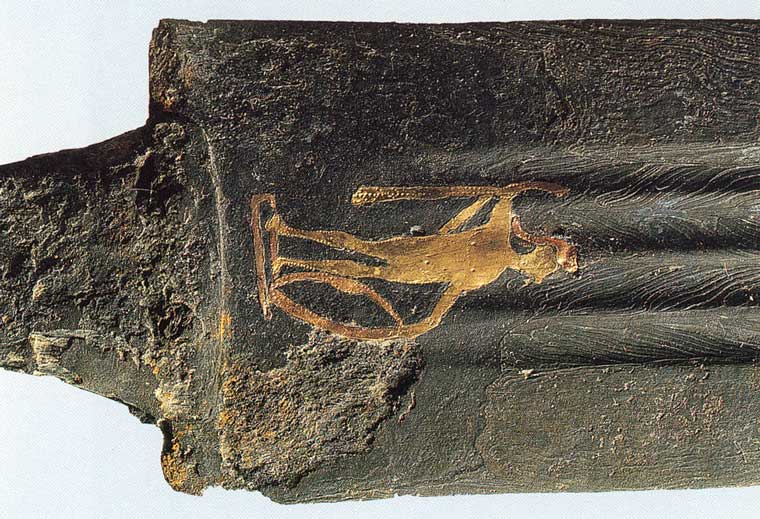Posts: 5,981 Location: Birmingham, Alabama
Mon 20 Dec, 2004 12:32 pm
Beautiful Roman Stuff
I just ordered a large fibula from this gentleman, but his arms,
shields and other pieces look fantastic, too. See the sample image below. I can't link you directly to his arms & armour replicas, but if you follow this link you'll see where to go.
http://www.hr-replikate.de/englisch/index.html
 Attachment: 99.05 KB
Attachment: 99.05 KB

Posts: 73 Location: PA
Mon 20 Dec, 2004 12:49 pm
Sweet :) Did the Romans really have pattern-welded blades though???
Posts: 11,553 Location: San Francisco
Mon 20 Dec, 2004 12:54 pm
| Eric Spitler wrote: |
| Sweet :) Did the Romans really have pattern-welded blades though??? |
Check out our article:
[ Linked Image ]
The History and
Development of
the Roman Gladius
Posts: 820 Location: Texas
Mon 20 Dec, 2004 2:02 pm
| Eric Spitler wrote: |
| Sweet :) Did the Romans really have pattern-welded blades though??? |
Hi Eric...
I have read that Roman sword blades were sometimes pattern-welded but it is hard to get a description or picture of what it would look like. My impression is that the pattern welding shown in the above picture is a little larger and more bold than Roman blades. For instance here is a picture of pattern welding on a very late Roman spatha found in the Illerup-ada bog find in Scandinavia...
ks
 Attachment: 98.68 KB
Attachment: 98.68 KB

Illerup Bog Spatha with Rivets and Inlay
Posts: 1,757 Location: Storvreta, Sweden
Tue 21 Dec, 2004 5:18 am
| Eric Spitler wrote: |
| Sweet :) Did the Romans really have pattern-welded blades though??? |
Patternwelding was not uncommon.
You find it on both Spatha blades and Gladii.
Some blades were made of steel folded many times (coming close to mono-steeel in nature).
Others were laminated iron and steel, yet others were more or less plain iron with very lowcarbon content.
There is a wide range of "quality" in these blades.
They are much more varied in shape and style than one might think when seeing what is generally avaliable in the replica market today.
Posts: 73 Location: PA
Tue 21 Dec, 2004 8:36 am
Thanks everyone! I didn't anticipate so many knowledgeable responses, but I guess I should have, considering the level of scholarship around here :)
Posts: 5,739 Location: Wichita, Kansas
Tue 21 Dec, 2004 8:59 am
One thing to remember about pattern welding is that it wasn't neccesarily a sign of high quality. That tends to be how we view it today in our mono-steel bladed world. However, in the ancient world pattern welding was simply a means to an end. It was the best method available that allowed the maker to take rather crapy materials and turn them into something usefull. So it wasn't really rare. It was just another means to an end.
You
cannot post new topics in this forum
You
cannot reply to topics in this forum
You
cannot edit your posts in this forum
You
cannot delete your posts in this forum
You
cannot vote in polls in this forum
You
cannot attach files in this forum
You
can download files in this forum


